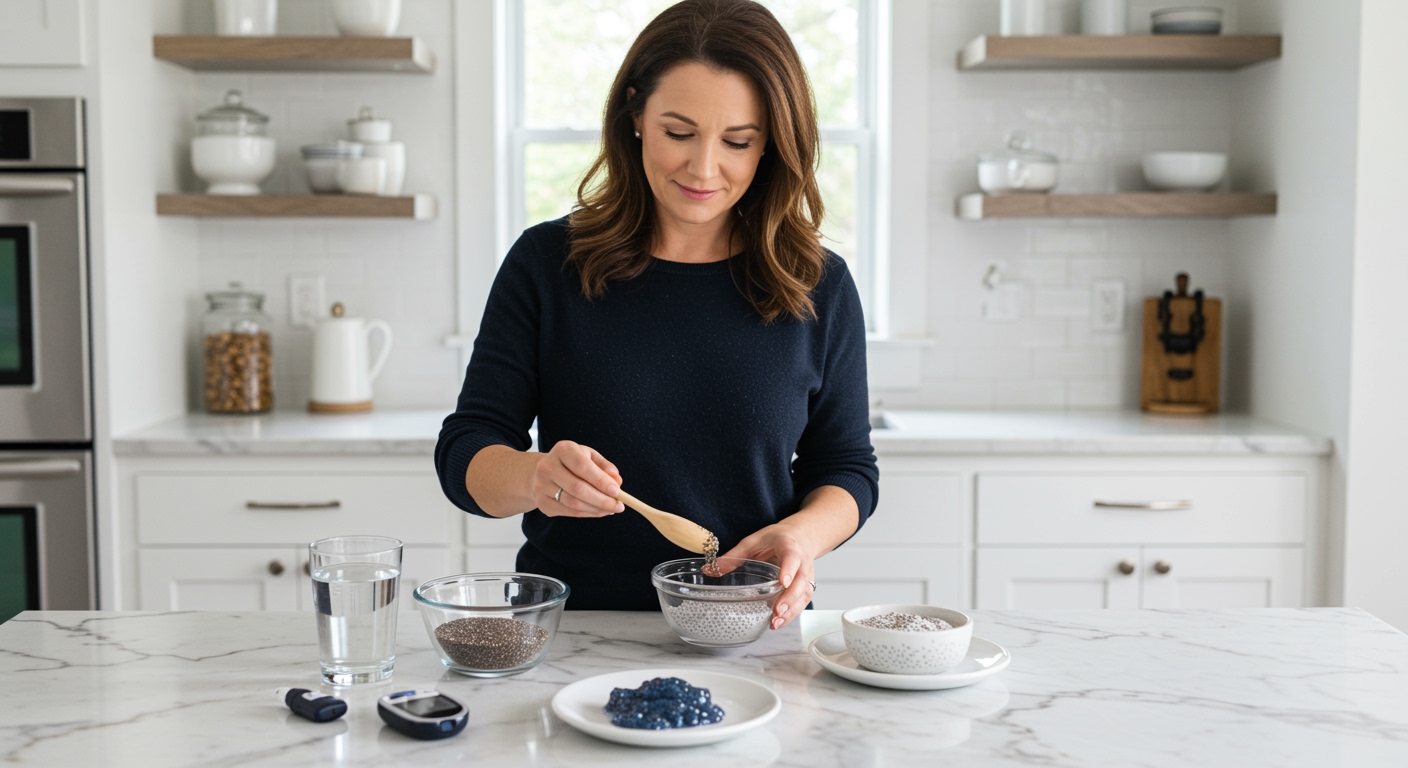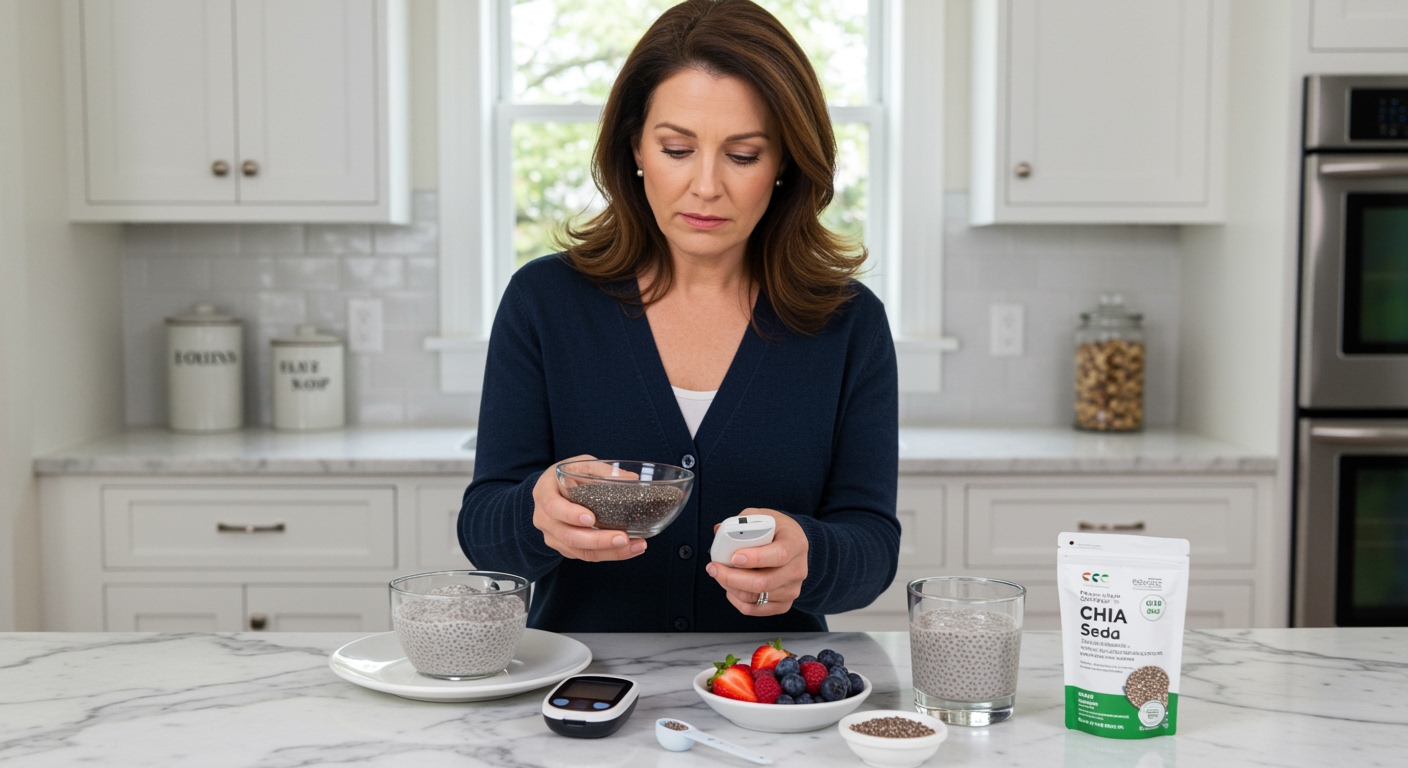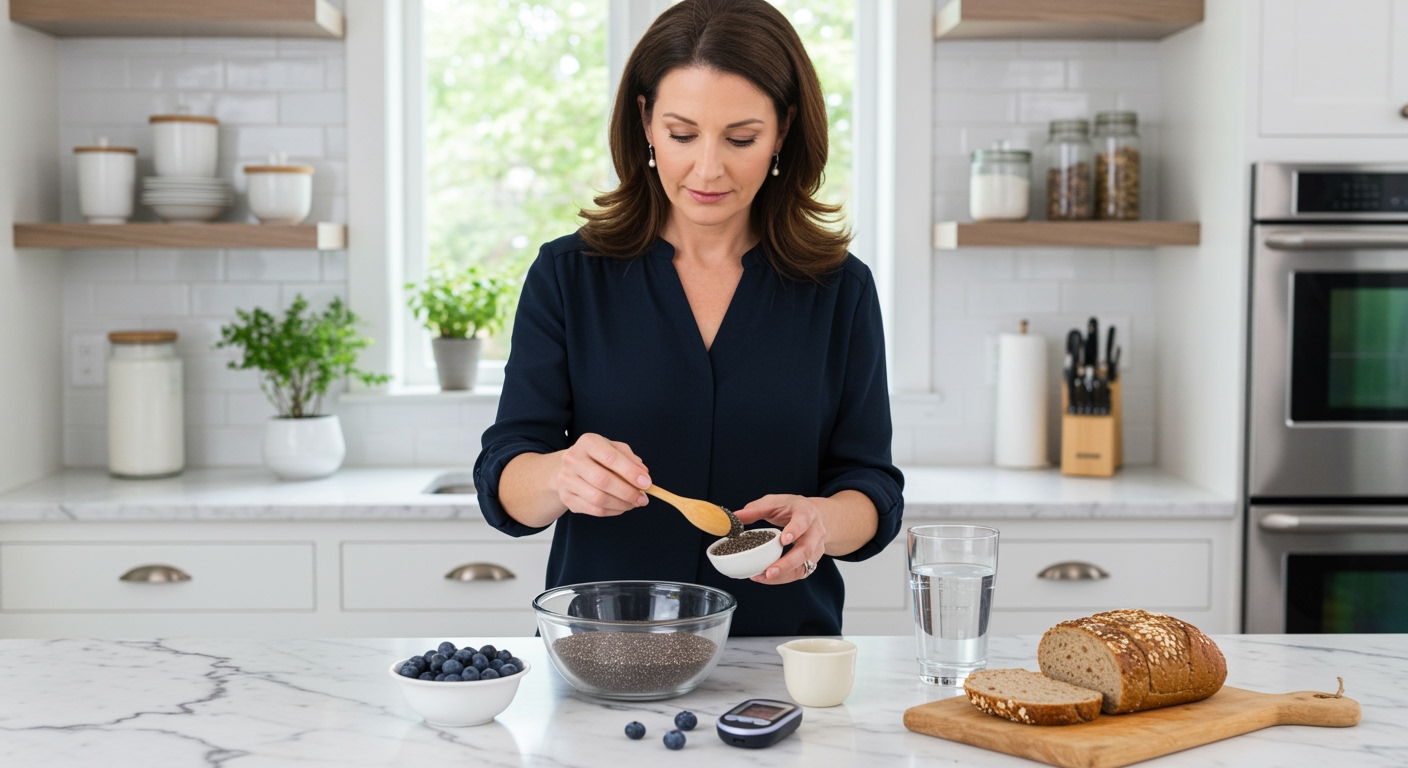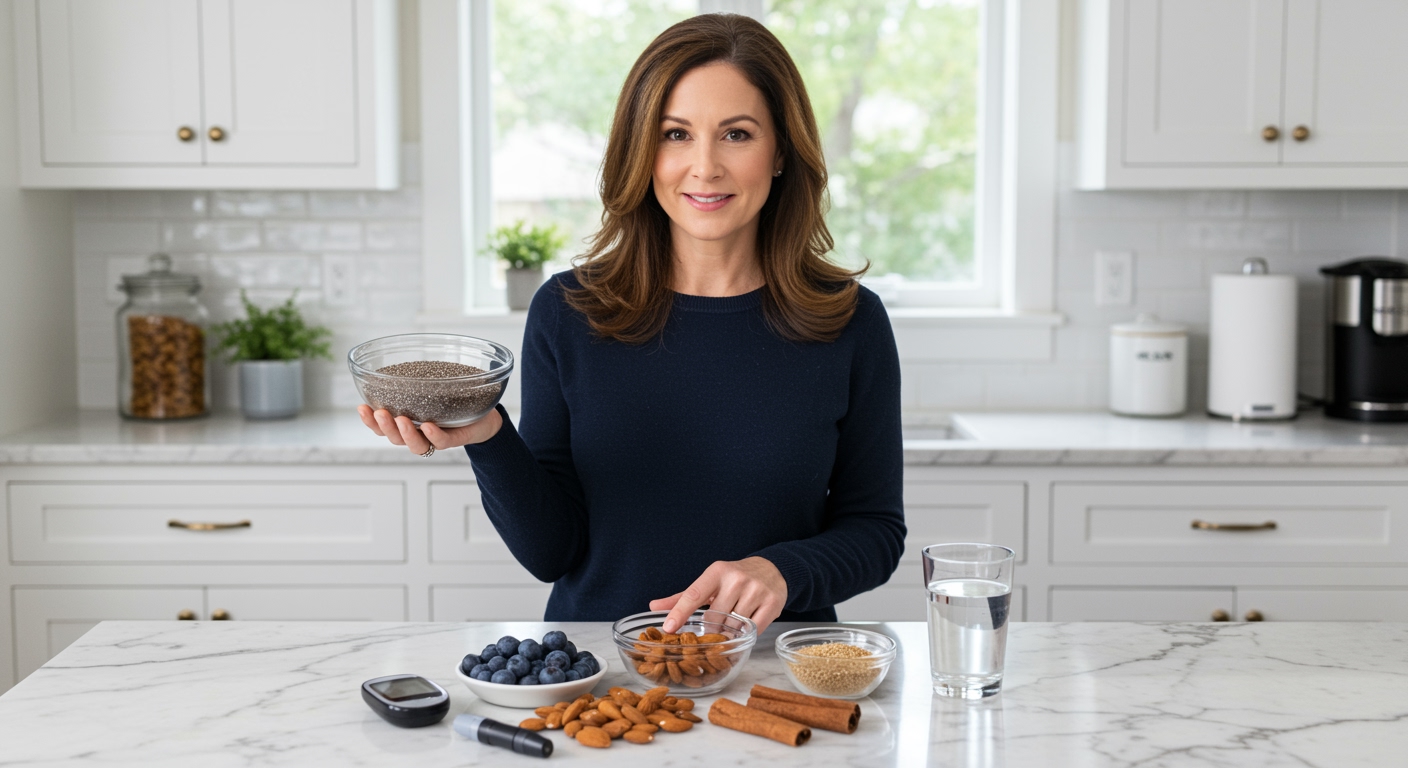✪ Key Takeaway: Chia seeds can help manage diabetes by slowing sugar absorption and improving insulin sensitivity when consumed properly.
Introduction
Your doctor just told you that your blood sugar levels are climbing higher each month.
You might be wondering if those tiny chia seeds everyone talks about can actually help control your diabetes without causing more problems.
Hi, I’m Abdur, your nutrition coach and today I’m going to explain exactly how chia seeds affect your blood sugar and whether they belong in your diabetes management plan.
How Do Chia Seeds Affect Blood Sugar Levels?
Chia seeds contain a unique combination of soluble fiber and healthy fats that work together to slow down sugar absorption in your digestive system.
When you eat chia seeds, they absorb water and form a gel-like substance in your stomach that creates a physical barrier around other foods.
This gel formation means that carbohydrates from your meal get released more slowly into your bloodstream, preventing those dangerous blood sugar spikes that diabetics fear.
Research shows that people with type 2 diabetes who consumed chia seeds experienced a significant reduction in their post-meal glucose levels compared to those who did not.
The omega-3 fatty acids in chia seeds also help improve insulin sensitivity, which means your body can use insulin more effectively to move sugar from your blood into your cells.
Studies indicate that regular chia seed consumption can lead to better long-term blood sugar control, as measured by hemoglobin A1c levels.
✪ Fact: Just one tablespoon of chia seeds contains 5 grams of fiber, which is 20% of your daily requirement.
What Makes Chia Seeds Different From Other Seeds?
Unlike flax seeds or sunflower seeds, chia seeds have an extraordinary ability to absorb up to 12 times their weight in water.
This absorption capacity creates a mucilaginous coating that forms around the seed when it comes into contact with liquid in your digestive system.
The fiber in chia seeds is predominantly soluble fiber, which dissolves in water and forms a thick, viscous gel that slows gastric emptying.
This slower gastric emptying means food stays in your stomach longer, leading to more gradual nutrient absorption and steadier blood sugar levels.
Chia seeds also contain a balanced ratio of omega-3 to omega-6 fatty acids, which helps reduce inflammation in your body that can worsen insulin resistance.
The protein content in chia seeds is complete, meaning it contains all essential amino acids your body needs for optimal metabolic function.
✪ Pro Tip: Soak chia seeds for 15 minutes before eating to maximize their blood sugar stabilizing effects.
Can Chia Seeds Replace Diabetes Medication?
Chia seeds are a powerful complementary tool for diabetes management, but they cannot and should not replace your prescribed medications.
Your diabetes medications work through specific mechanisms that target different aspects of blood sugar control, such as increasing insulin production or improving insulin sensitivity.
While chia seeds can help stabilize blood sugar naturally through their fiber and healthy fat content, they work differently than pharmaceutical interventions.
Think of chia seeds as part of your overall diabetes management strategy that includes medication, regular exercise, stress management, and a balanced diet.
Some people find that adding chia seeds to their routine allows them to achieve better blood sugar control, which may eventually lead to medication adjustments under medical supervision.
Always work with your healthcare provider to monitor your blood sugar levels and make any necessary changes to your treatment plan when adding new foods like chia seeds.
✪ Note: Never stop or change your diabetes medication without consulting your doctor first.
What Is The Right Amount Of Chia Seeds For Diabetics?
The optimal amount of chia seeds for diabetes management is 1 to 2 tablespoons per day, which provides about 5-10 grams of fiber.
Starting with just 1 teaspoon daily allows your digestive system to adapt to the increased fiber intake without causing uncomfortable bloating or gas.
You can gradually increase to 1 tablespoon after a week, then to 2 tablespoons after another week if your body tolerates it well.
Timing matters significantly for blood sugar control, so consume chia seeds about 30 minutes before meals to maximize their glucose-lowering effects.
Drinking plenty of water when eating chia seeds is crucial because the seeds need adequate liquid to form their beneficial gel coating.
Some people prefer to pre-soak their chia seeds in water or unsweetened almond milk for 15-20 minutes before consuming them to ensure proper hydration and gel formation.
Monitor your blood sugar levels more frequently when first adding chia seeds to identify how they affect your individual glucose response.
✪ Pro Tip: Mix chia seeds into yogurt or oatmeal rather than eating them dry for better digestive comfort.
Are There Any Side Effects For Diabetics?
Most diabetics can safely consume chia seeds without experiencing significant side effects when they follow proper portion guidelines.
The most common side effect is digestive discomfort including bloating, gas, or stomach cramps, especially when people consume too much too quickly.
Some individuals may experience blood pressure changes because chia seeds contain compounds that can have mild blood pressure lowering effects.
If you take blood thinning medications, consult your doctor before adding chia seeds because their omega-3 content may enhance the effects of these medications.
People with swallowing difficulties should avoid dry chia seeds completely because they can expand and potentially cause choking hazards.
Rarely, some people may develop allergic reactions to chia seeds, which can include skin rashes, difficulty breathing, or digestive upset.
Always start with small amounts and pay attention to how your body responds, especially during the first few weeks of consumption.
The Bottom Line
Chia seeds can be a valuable addition to your diabetes management plan when used correctly alongside your current treatment approach.
Small seeds can create big changes when you use them consistently and intelligently.
I would love to hear about your experience with chia seeds or answer any questions you might have about incorporating them into your diabetes management routine, so please share your thoughts in the comments below.
References
At NutritionCrown, we use quality and credible sources to ensure our content is accurate and trustworthy. Below are the sources referenced in creating this article:
- PMC: Chia Seeds and Diabetes Management
- PubMed: Effects of Chia Seeds on Blood Glucose
- University of Toronto: Chia Seeds Promote Weight Loss in People with Diabetes
- PHLabs: Be Proactive About Diabetes with Chia Seeds





